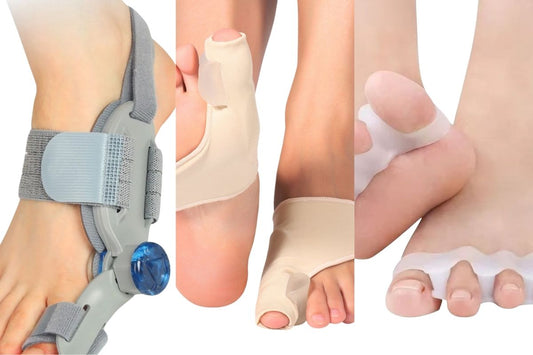Getting quality sleep can be frustrating when you’re dealing with tennis elbow — especially when nighttime pain makes it hard to find a comfortable position. Whether your discomfort is from overuse, inflammation, or recovering from injury, the wrong sleeping posture can aggravate symptoms and prolong recovery.
This guide shares practical, research-informed tips to help you rest easier.
What Makes Tennis Elbow Pain Worse at Night?
Tennis elbow (lateral epicondylitis) often feels worse at night due to:
- Prolonged inactivity, which can reduce circulation
- Unconscious arm positioning that places strain on the extensor tendons
- Swelling or inflammation buildup over the day
- Lack of daytime distraction, making pain more noticeable
You may also be unknowingly curling your wrist or bending your elbow, which adds tension to the already-irritated tendon.
Tip 1 of 7: Sleeping Positions to Try
Here are some positions that may help reduce discomfort while sleeping:
1. Sleep on Your Back with Arm Straight
This keeps pressure off your elbow and minimizes tendon tension.
Place a small pillow or rolled towel under your forearm to elevate it slightly — this can ease swelling and improve circulation.
2. Side Sleeping with Pillow Support
If you’re a side sleeper, avoid tucking your arm under the pillow or body. Instead, rest the affected arm on a pillow placed in front of you, with the elbow slightly bent and wrist neutral.
3. Avoid Sleeping on the Affected Side
This puts direct pressure on the injured area and may increase irritation overnight.
Tip 2 of 7: Use a Pillow or Arm Elevation Wedge
Sleeping with your arm propped up can ease pressure on the inflamed tendons around your elbow. A contoured pillow, rolled towel, or adjustable arm wedge placed under the forearm helps maintain gentle elevation and prevents you from curling or compressing the joint in your sleep. This setup can be especially useful if you tend to sleep on your side or stomach, which may otherwise aggravate symptoms.
Tip 3 of 7: Apply a Cold Pack Before Bed
Swelling can build up throughout the day — especially after repetitive use of your arm — and may worsen discomfort when lying still. Applying a cold compress or ice pack to the outside of the elbow for 10–15 minutes before bed can reduce inflammation and help desensitize the area temporarily. Avoid placing ice directly on the skin; instead, wrap it in a towel or soft cloth to prevent irritation.
Tip 4 of 7: Stretch Gently Before Bedtime
Gentle stretches help improve flexibility and reduce tightness around the forearm muscles connected to the elbow. Here are two effective options:
- Wrist Extensor Stretch: Extend your affected arm in front of you, palm facing down. Use your opposite hand to gently pull the fingers back toward your body until you feel a stretch in the top of the forearm. Hold for 15–30 seconds, then release.
- Wrist Flexor Stretch: Similar to the above, but with your palm facing up. Pull the fingers back gently until a stretch is felt along the underside of your forearm.
These stretches help release daily tension without aggravating the tendons. Avoid overstretching — the goal is to feel a gentle pull, not pain.
Tip 5 of 7: Use a Brace or Sleeve While Sleeping
Wearing an elbow brace or compression sleeve at night can help in multiple ways:
- Keeps your arm in a neutral position and prevents excessive bending
- Applies gentle compression, reducing inflammation
- Protects against unconscious movements that might strain the tendon
Supportive braces or sleeves like our Tennis Elbow Brace collection are often designed for both daytime and nighttime wear.
Choose a model that’s comfortable enough to sleep in — ideally with adjustable straps, breathable material, and targeted support at the forearm. It's important not to compress your elbow area too tightly in order to not restrict proper blood circulation.
Tip 6 of 7: Avoid Screen Time Late at Night
Using your phone or laptop close to bedtime not only strains your eyes but can also delay melatonin release, making it harder to fall asleep. This is especially unhelpful if you're already dealing with discomfort from tennis elbow. Try shutting off screens 30–60 minutes before bed and replacing them with a calming routine — such as reading a book or practicing breathing exercises — to improve sleep quality and support healing.
Tip 7 of 7: Consider Over-the-Counter Pain Relief
Pain or stiffness can keep you tossing and turning. Over-the-counter NSAIDs like ibuprofen or naproxen may reduce inflammation and dull discomfort enough to help you fall asleep. However, it’s best to consult your doctor before taking any medication regularly, especially if you have other conditions or are taking other prescriptions. Some individuals also find relief using topical anti-inflammatory gels applied before bedtime.
When to See a Professional
If pain continues to wake you up despite bracing and repositioning, it may be time to consult a physiotherapist or orthopedist. Persistent night pain can sometimes signal more advanced tendon damage or nerve involvement.
Final Thoughts
Sleeping with tennis elbow isn’t always easy, but small adjustments in posture and support can make a meaningful difference. A 10-minute gentle stretch before bed may release tension and help with circulation and healing. A quality elbow brace can reduce overnight aggravation and help your body recover more effectively. Try different sleeping setups until you find one that helps your arm rest — just like the rest of you.




